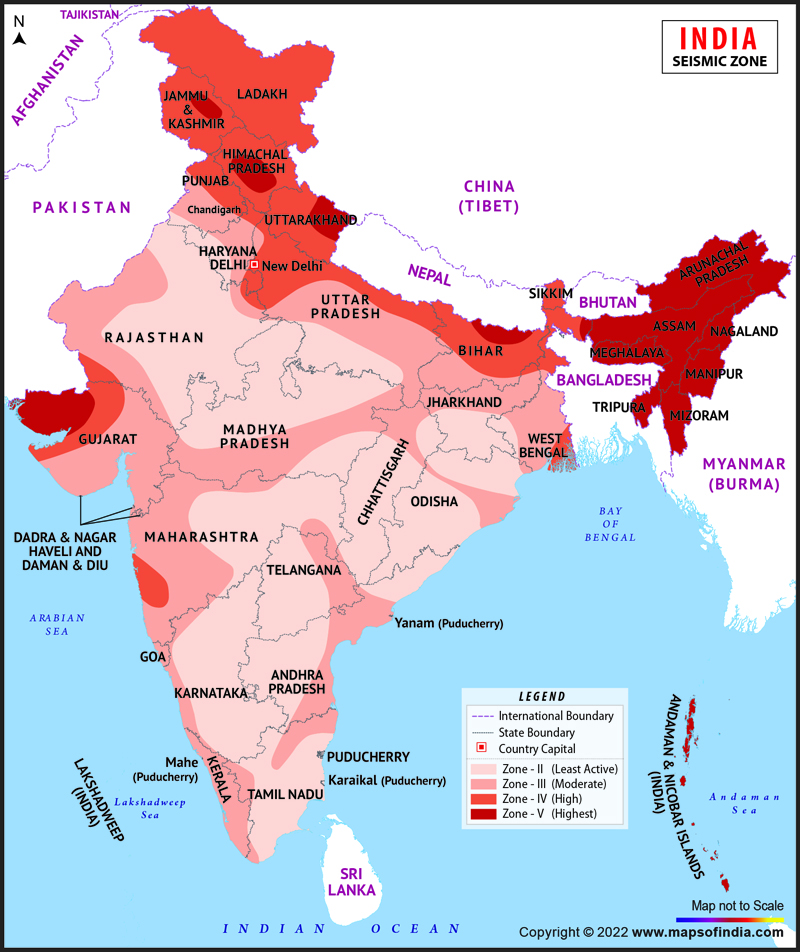India is divided into four seismic zones, based on the intensity and frequency of earthquakes in the region. In this page let us learn about the earthquake zones of India
The Earthquake zones in India are as follows:
Zone 2: This zone covers parts of Jammu and Kashmir, Himachal Pradesh, Uttarakhand, Sikkim, parts of North Bihar, and the northern parts of Uttar Pradesh. This zone is considered a moderate risk zone, with a low probability of seismic activity.
Zone 3: This zone covers parts of Gujarat, Rajasthan, Haryana, Delhi, parts of Punjab, Uttar Pradesh, Bihar, West Bengal, Jharkhand, Chhattisgarh, parts of Maharashtra, and the Andaman and Nicobar Islands. This zone is considered a moderate to high-risk zone, with a moderate probability of seismic activity.
Zone 4: This zone covers parts of Jammu and Kashmir, Himachal Pradesh, Uttarakhand, parts of North-East India, and the Andaman and Nicobar Islands. This zone is considered a high-risk zone, with a high probability of seismic activity.
Zone 5: This zone covers the entire North-Eastern region, parts of Jammu and Kashmir, Himachal Pradesh, and Uttarakhand. This zone is considered the highest risk zone, with a very high probability of seismic activity.
There is another zone called zone 1 but India had not adopted it as it may not suit the seismic zone of the country.





Leave a Reply